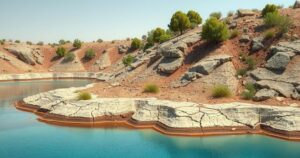Study Refutes Claims of Iran Earthquake Being Triggered by Nuclear Test

A recent study disproves claims that a 4.5 magnitude earthquake in Iran was caused by a nuclear test, attributing it to natural tectonic forces instead. Research led by Dr. Benjamin Fernando reveals how misinformation spread on social media, emphasizing the need for accurate scientific communication during geopolitical tensions.
Recent research has conclusively debunked claims that a 4.5 magnitude earthquake in Iran on October 5, 2024, was caused by a covert nuclear weapons test. Concerns arose amidst escalating tensions in the Middle East, leading to widespread speculation on social media and some news outlets. The study, led by Dr. Benjamin Fernando from Johns Hopkins University, emphasizes the dangers of misinformation during geopolitical crises, asserting that scientific data must be accurately interpreted.
Dr. Fernando and his team utilized seismic signals from the event to determine that the earthquake was a result of natural tectonic activity, specifically a reverse fault associated with the convergence of the Arabian and Eurasian plates. Their analysis confirmed that the seismic waves produced by the earthquake were entirely distinct from those of a nuclear explosion.
This earthquake occurred near Semnan, a region known for its geological instability. Historical data revealed similar earthquakes in 2015 and 2018, which were unrelated to any nuclear tests, underscoring the natural seismic activity in the area. Despite this, misinformation about a potential nuclear test spread rapidly, with social media speculation emerging just moments after the earthquake.
Dr. Fernando noted that initial tweets distorted seismic information, leading to rampant misinformation. Some narratives incorrectly mixed data from a separate seismic event in Armenia. The research team suggested that the involvement of individuals with geological expertise in disseminating the misleading narratives further complicated the truth.
Notably, one account promoting the nuclear theory was found to be associated with Russian-backed campaigns. The misinformation then transitioned from social media into various international news reports, particularly within Indian media, where erroneous data was frequently cited.
The researchers recommend establishing rapid-response collaborations among seismologists to counteract misinformation swiftly. Dr. Saman Karimi, another co-author of the study, suggested that scientific agencies should release prompt reports to address inaccuracies and that partnerships with social media could enhance the dissemination of accurate information.
The study focuses on the geophysical implications of a significant earthquake in Iran, which some speculated was related to a nuclear test. It highlights how misinformation can spread during sensitive geopolitical situations and emphasizes the importance of accurate scientific communication. The research aims to clarify the natural causes of seismic events and mitigate unfounded claims that may arise from misunderstandings or intentional disinformation campaigns.
In conclusion, the extensive study led by Dr. Benjamin Fernando demonstrates that the recent earthquake in Iran was a natural occurrence, not related to any nuclear activity. The rapid spread of misinformation surrounding the event illustrates the critical need for accurate information dissemination during crises. Collaboration among seismologists and swift reporting by scientific agencies can play a vital role in combating misinformation and ensuring public understanding of seismic activities.
Original Source: www.lebanondemocrat.com






